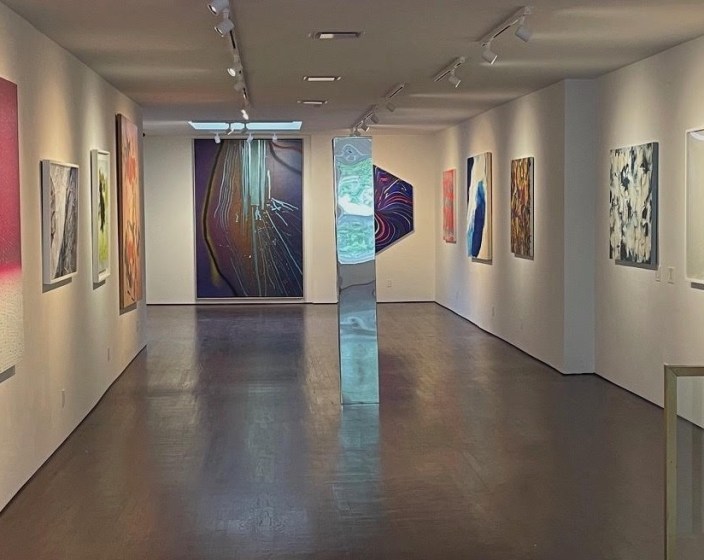
A preliminary look would lead one to assume that Catherine Howe’s (b. 1950) paintings reference historic examples of still life against deep space or landscape with her recurrent figures reminiscent of flowers and vases. While the artist admits this connection, she explains that she is uninterested in representational painting. Instead, she views her process, which is both physical and intuitive, as an exercise in the evocative power of paint as a material. The abstracted figures are composed of various textures and densities with Howe’s spontaneous technique involving brushing, splattering, spilling, and sculpting the layers of paint. Her palette is varied and vibrant with shocking contrasts, amplified by the inclusion of metal leaf, that demand the attention and consideration of the viewer. The themes of her paintings can be considered as still life or landscape, however, the true theme is to energetically deploy the materials to reflect on painting and nature through the process itself.
Catherine Howe has exhibited extensively in the United States and abroad. Her body of work has been discussed in numerous publications. She was a professor in the Graduate Painting Faculty at the New York Academy of Art until 2021. She currently lives and works in Manhattan and the Hudson Valley.